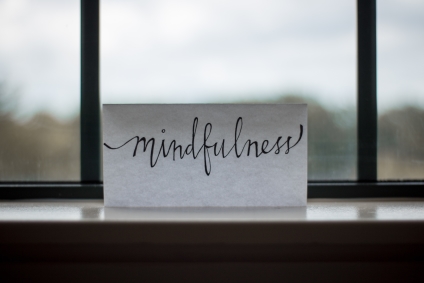How to Make Mindfulness a Way of Life

“Life is available only in the present moment.” ~ Thich Nhat Hanh
I’ve had people tell me that they’re not interested in becoming a guru: they just want to learn how to be happy. While this sentiment may sound humble, and noble, it is not practical. You see, true happiness comes only with wisdom, and not material possessions or outside circumstances.
It is only when we have a much greater understanding of the consequences of our thoughts and actions that we can behave in more loving and harmonious ways. True happiness and wisdom are inseparable.
The problem that many people have is their misconception of what leads to happiness. They usually point to their successful career, family, and material possessions as evidence of their happiness. But as you’ve probably realized by now, all these things are impermanent and bring only temporary pleasure. When they lose these things, they will also lose their happiness.
Our Spiritual Practice Must Become A Way Of Life
We can’t achieve true happiness until we understand our suffering and learn how to overcome it. As long as our happiness depends on things that are impermanent, we will always be disappointed. Furthermore, as long as our practice remains only a part of our lives, our spiritual growth and freedom from suffering will be limited.
If we want to achieve long-lasting peace and serenity, then our spiritual practice must become a way of life, and our happiness must depend on something that is constant. One thing in our lives that is constant is the present moment, and this is at the core of mindful living.
To learn how to make mindfulness a way of life, instead of just a part of your life, you need to experience the full power of the mindfulness meditation practice.
The Present Moment: Your Gateway to Enlightenment
We often talk about living deeply in the present moment. There is an important reason for this. Actually, there are various reasons. From a practical standpoint, the present moment is where the human experience is always taking place. The past is already gone, and the future will always remain in the future.
Our experience is in the here and now, and nowhere else. When we get all caught up in thinking about the past and the future, we are not being fully engaged in what is taking place where we actually are. In other words, we are not in touch with reality.
At a deeper level, the present moment is where a whole other reality exists. It is where our True Nature resides, and if we want it to shine through, then we must dwell deeply the present moment. The present moment is similar to our True Nature in the sense that it has no dimensions of time or space.
Scientists have been unable to identify a physical component of consciousness. Sure, they might be able to describe it in terms of electrical impulses that make up thought patterns, but where are the images projected? We know the images exist because we can see them in our mind, but they have no physical dimensions, which is a requirement for something to exist in the physical universe.
Learning to See Reality for Ourselves
Scientists have had difficulty studying consciousness because they’ve been unable to measure it. This is why they’ve left the study of consciousness to religious thinkers and philosophers, who use different methods.
In the mindfulness meditation practice, we investigate the nature of reality by observing it. Instead of developing a theory and trying to prove it to the rest of the world, we learn to see reality for ourselves, and then we teach others how to see it for themselves. This is why it’s so important to develop our observation skills: concentration and mindfulness. Using this approach, not only will we begin to understand reality, but we will also transform our lives in the process.
By observing with clarity, we can simply look at a phenomenon and understand its nature. As we awaken our True Nature, we awaken another sense for perceiving the world. In addition, we will see a world that doesn’t exist within the confines of time and space. It is the world of consciousness, and it exists deeply in the present moment.
The Spiritual Experience
If you’ve ever had a profound spiritual experience, then you’ve touched the present moment very deeply. It feels like time comes to a complete stop, and you’re in a reality outside the space-time continuum. There is no pain and suffering there—only peace, tranquility, and vast knowledge. It is where we find the unlimited source of mindfulness energy. The Buddhists call this nirvana.
This is why we place so much emphasis on living in the present moment. All it takes is touching one moment very deeply, and the full force of mindfulness energy comes flooding through like a tidal wave of peace and serenity.
So how do you touch nirvana? You do it by training yourself to be in the present moment. Your awakening can come quickly, or it can come slowly. It all depends on how much right effort you put into your practice. If you keep practicing mindfulness meditation and living mindfully, you will gradually immerse yourself in the vast ocean of mindfulness energy. And if conditions are sufficient, you will suddenly get pulled in without warning. It is a wonderful experience when this happens.
Finding the Present Moment through Mindful Living
Practicing mindfulness in our daily activities can be quite a challenge, if we don’t have the proper tools. Many of our activities become so routine that we can do them without thinking. Then we begin occupying our mind with other things we think are productive. But are they really?
Sometimes our mind drifts off thinking about the past or the future, or we simply worry about things. This usually happens when we’re engaged in a routine activity we consider boring. Remember, we generally want to avoid pain, and for some of us, boredom can be quite uncomfortable. So to avoid boredom, we engage in fantasies to stimulate sensual pleasure. This certainly isn’t productive, at least not for our spiritual development.
Turning Routine Activities into Meditation Sessions
Routine activities are great opportunities to practice concentration and mindfulness. They will help you stay grounded in the present moment. We can take a routine activity, such as washing dishes, and turn it into a meditation session. The only difference is the object of our meditation.
Pick some routine activities, and turn them into meditation sessions. Whether they be ironing, folding clothes, mowing the lawn, or taking out the trash, they are all wonderful opportunities to further your spiritual development.
When performing one of these activities, make a diligent effort to practice concentration or mindfulness, and keep bringing yourself back whenever you drift away in thought. This may sound boring, but it’s not. As you gain a deeper awareness of the present moment, you’ll begin to access the source of mindfulness energy within you, and the world will truly come alive.
There may be more complex activities that require greater attention, such as work-related tasks, or cooking a meal. The next time you engage in these activities, see if you can apply your mindfulness skills to improve your performance.
As you can see, concentration and mindfulness have applications to all our daily activities. You can either use them to aid your spiritual development, or to perform those activities in a more efficient and effective manner. Either way, they will enrich your life.
Need help learning mindfulness meditation? Check out Mindfulness Meditation Made Simple: Your Guide to Finding True Inner peace (paperback).
If you enjoyed this article, sign up below for the Blooming Lotus Newsletter and we’ll notify you when the next article is released:





0 Comments